17th 18th Century Butterfield Sundial + Leather Cover Case
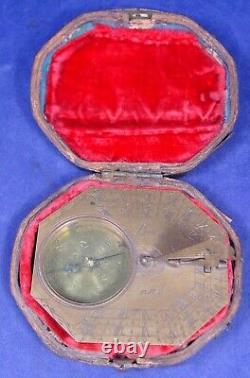


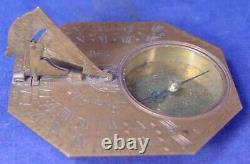

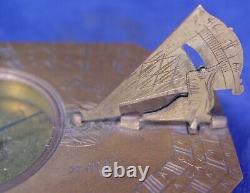
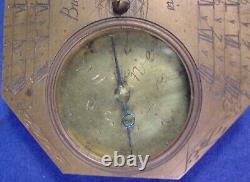
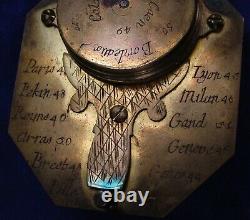
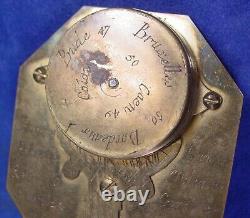


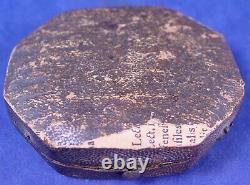

This is a very early sundial by the well known maker Michael Butterfield. Seems to be in good working condition, measures about 2 3/4 inches across. Here is some information on the maker Michael Butterfield. He worked for the royal court of France and was appointed engineer to the King.
He opened in the district faubourg Saint-Germain, in the street rue Neuve-des-Fossés, a shop for precision instruments. His shop's sign read AUX ARMES D'ANGLETERRE (at the sign of England's coat of arms, 1st mention in 1677). Russia's Czar Peter the Great visited his shop in 1717 and ordered a great quantity of dials made of gilt copper. Description The Butterfield dial is a type of semi-universal horizontal dial, that is, a horizontal dial which can be used in a number of different latitudes, but not in the full range from 0° to 90°. It is generally either octagonal or oval in shape and is almost always marked with three or four different hour scales, each of which is marked with a specific latitude. The essentials of the Butterfield sundial are a dial plate engraved with a number of different hour scales serving different latitudes, a compass, and an adjustable gnomon. The gnomon is marked with a latitude scale and it can move within the bird index which marks the latitude angle against the scale.Who originally designed these instruments. Examples are known which clearly date from before the time that Butterfield began working in Paris. Earlier items known were made by Roch Blondeau (dated 1673), but also by Timothée Collet. The fact that Butterfield used a bird-shaped pointer on the gnomon probably made his sundials highly fashionable and he soon achieved a monopolistic situation on the market. The item "17th 18th Century Butterfield Sundial + Leather Cover Case" is in sale since Sunday, February 16, 2020.
This item is in the category "Antiques\Science & Medicine (Pre-1930)\Scientific Instruments\Other Antique Science Equip". The seller is "klony" and is located in Kalispell, Montana. This item can be shipped worldwide.

